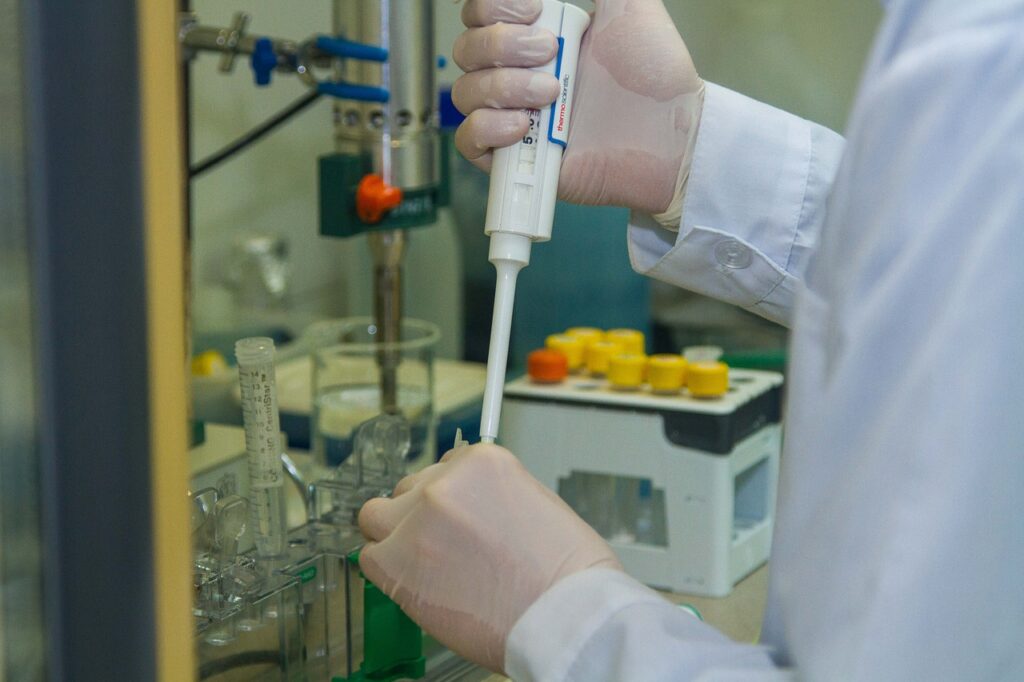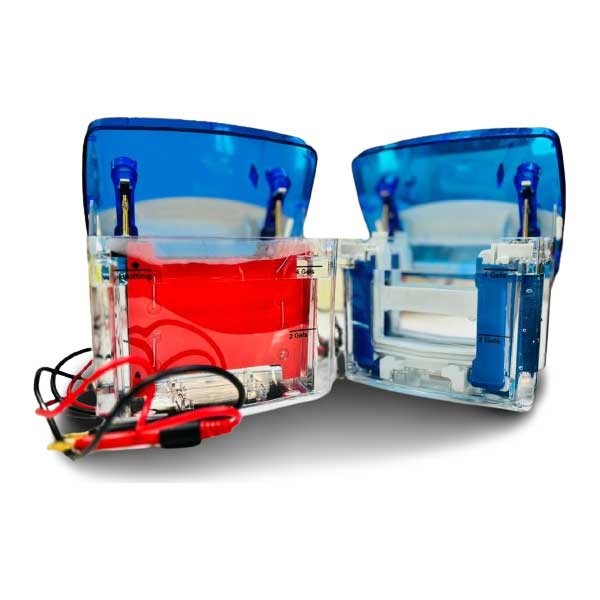Using a Vertical Gel Electrophoresis System can have various economic and environmental advantages, and this post will help you understand that. Starting with the basic overview, the post will clarify and doubts related to this equipment before you finally purchase it.
An apparatus used in laboratories to separate molecules, usually proteins or nucleic acids, according to their size and charge is a vertical gel electrophoresis device. It is made up of two glass or plastic plates sandwiched vertically with a gel slab. Usually composed of agarose or polyacrylamide, the gel allows molecules to flow across its porous matrix in response to an applied electric current.
An outline of a vertical gel electrophoresis system operation is provided below:
Gel Preparation: A buffer solution is combined with agarose or acrylamide at the proper concentration to create the gel. After that, the gel is divided between two glass plates and left to harden.
Sample loading: It involves mixing samples with a loading buffer before adding them to wells at the top of the gel that hold the molecules that need to be separated.
Electrophoresis:The gel is immersed in a buffer solution within the electrophoresis chamber during the electrophoresis process. When the gel is subjected to an electric current, the molecules move from one electrode to the other through the gel matrix. Smaller molecules traverse the gel more quickly and extensively than bigger ones.
Visualization: The separated molecules are usually seen by staining the gel after electrophoresis. Common stains for proteins include Coomassie Brilliant Blue or silver staining, whereas ethidium bromide or SYBR Safe are used for nucleic acids.
Environmental and economic benefits:
Energy efficiency: Because vertical gel electrophoresis systems use smaller gel volumes and need shorter run times than horizontal systems, they frequently use less energy to operate. If the energy supply is based on fossil fuels, this corresponds to decreased greenhouse gas emissions and power use.
Decreased reagent consumption: Compared to horizontal gel electrophoresis, which utilizes higher amounts of agarose or polyacrylamide gel, vertical gel electrophoresis usually uses fewer volumes of reagents. This decrease in the amount of reagent used results in financial savings as well as a lessening of the environmental effect of reagent manufacturing and disposal.
Less waste generation: Because vertical gels use lower amounts of gel material and buffer solutions than horizontal gels, they produce less waste overall. By reducing trash output, the environmental impact of disposal—including waste treatment and landfill usage—is reduced.
Superior sample resolution: When compared to horizontal methods, vertical gel electrophoresis frequently offers superior sample resolution and separation. This may result in less experimental variability and more accurate results, which might save time and money by reducing the need for repeated tests.
Versatility and flexibility: Western blotting, DNA sequencing, protein and nucleic acid analysis, and many more uses are all possible with vertical gel electrophoresis devices. Because of their adaptability, researchers may use the same equipment for different studies, increasing cost-effectiveness and lowering the requirement for specialized hardware.
Area efficiency: Compared to horizontal systems, vertical gel electrophoresis systems usually take up less bench area in laboratories, making better use of available space possible. This might be especially helpful for laboratories looking to maximize their workflow or those with restricted space.
Overall, researchers looking to reduce resource consumption, waste production, and operating expenses while preserving high-quality experimental findings will find vertical gel electrophoresis to be an appealing alternative due to its economic and environmental benefits.
Contact IGeneLabserve by phone at 09310696848 or through our website at https://www.igenels.com/ to find out more about our Vertical Gel Electrophoresis System.


